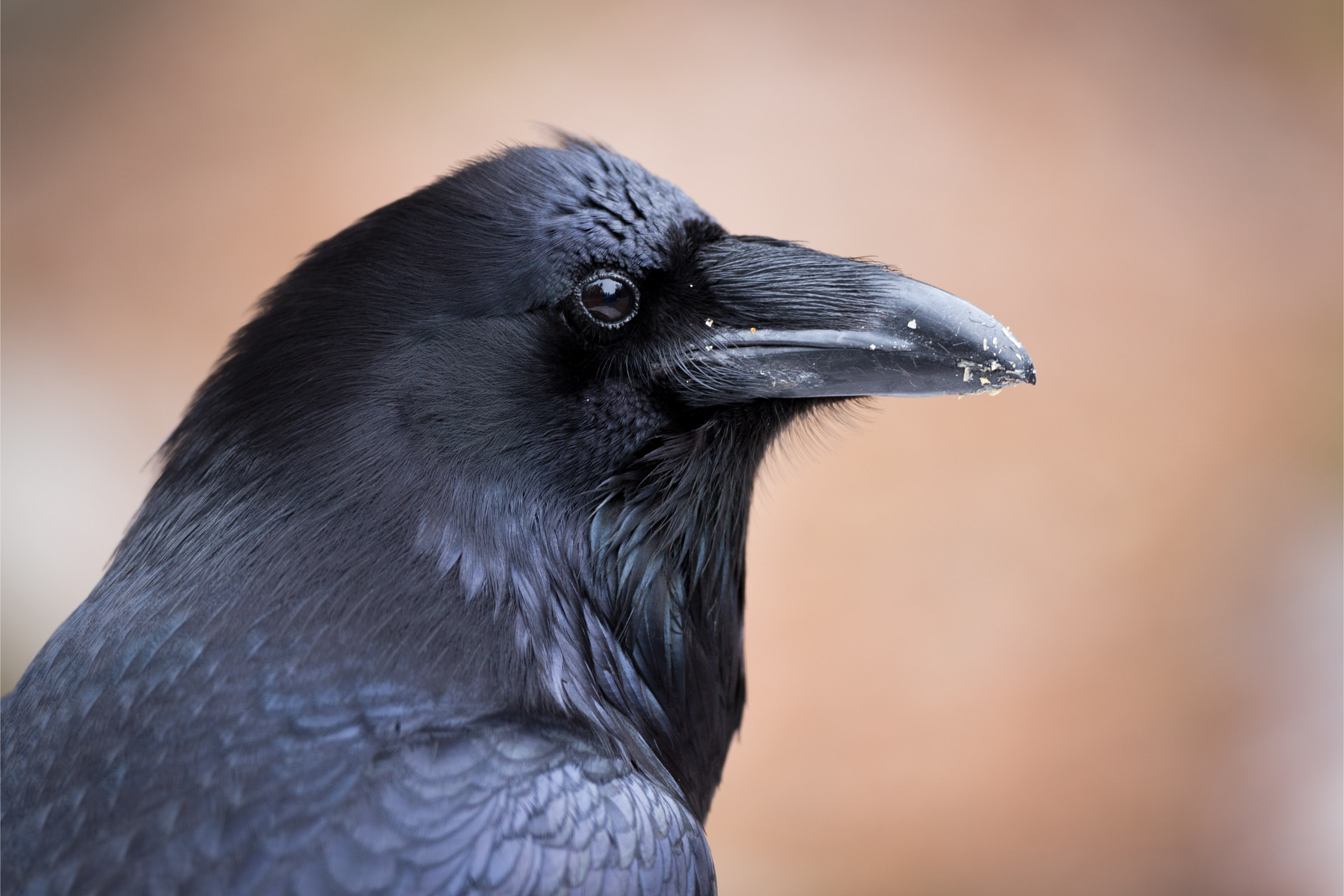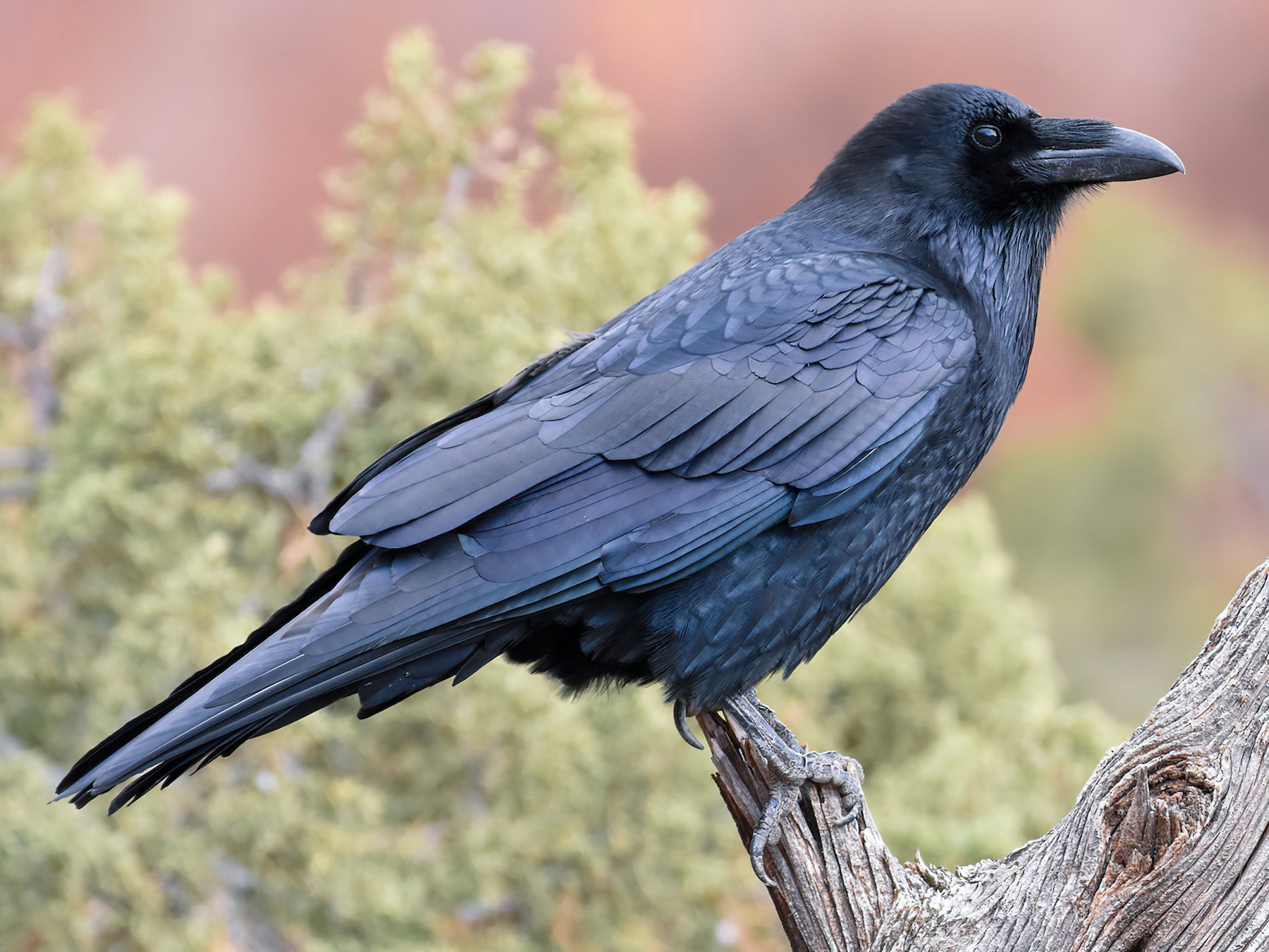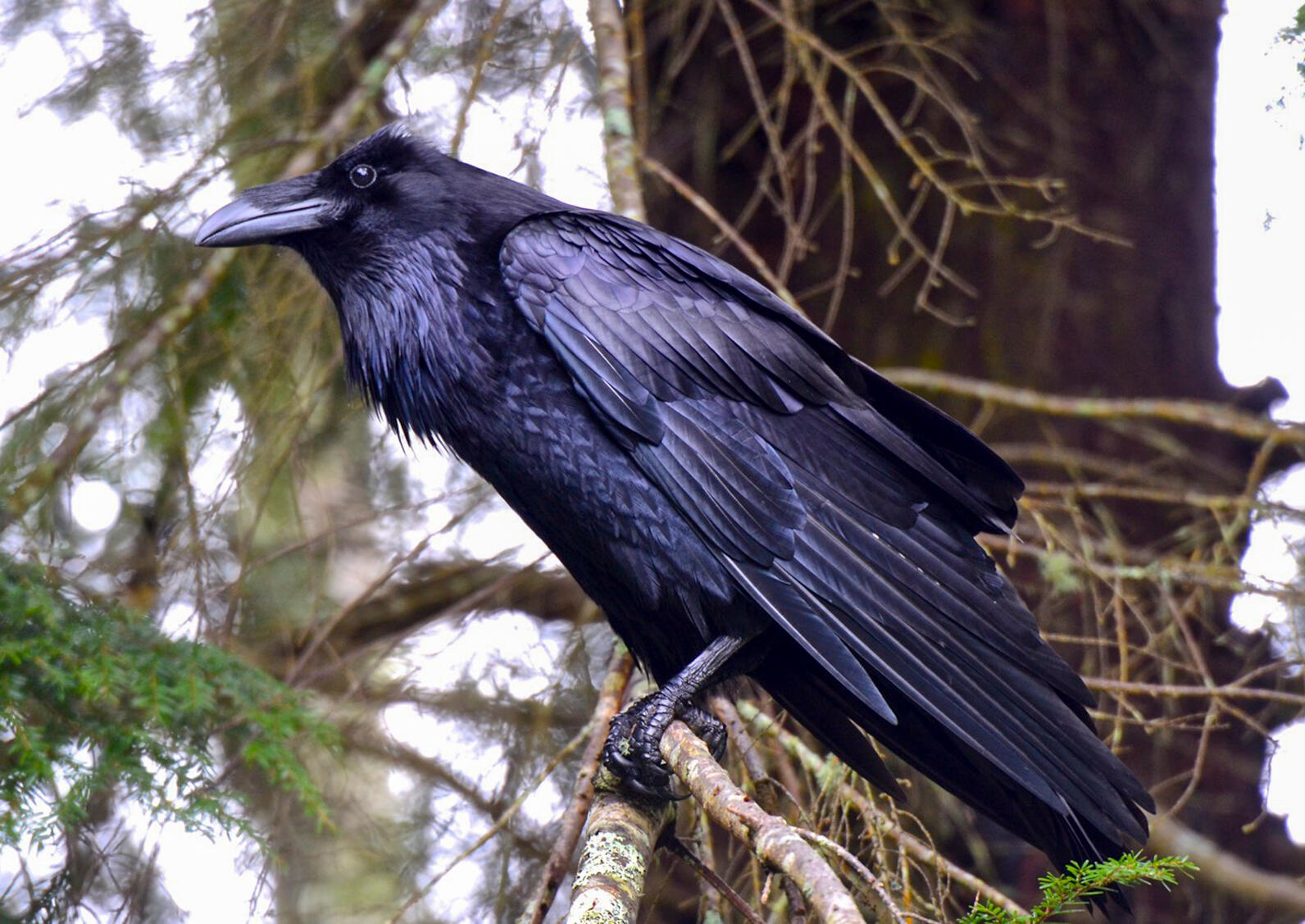Raven Thick: Unveiling The True Power Of The Common Raven
Have you ever gazed skyward, captivated by the silhouette of a large, black bird soaring with an almost preternatural grace, and wondered, "Is that a crow or a raven?" For many, the distinction remains elusive, yet for those who delve deeper, a world of difference unfolds. Among these magnificent creatures, the common raven stands out, not just for its imposing size and glossy black plumage, but for its remarkably robust, or as some might describe it, "raven thick" physique. This isn't merely about physical bulk; it speaks to an inherent power, an undeniable presence that has captivated human imagination for centuries.
Beyond their striking appearance, common ravens possess an intelligence and adaptability that truly set them apart. Their physical attributes—from their large, thick, and slightly curved beaks to their robust necks—are not just for show; they are integral to their survival and their role as one of nature's most formidable avian predators and scavengers. This article will explore the fascinating world of the common raven, examining what makes them so distinct, their remarkable capabilities, and their enduring impact on culture and popular imagination, revealing why they are indeed a creature of "real ass" power and presence in the natural world.
Table of Contents
- The Majestic Common Raven: A True Powerhouse of the Avian World
- Decoding the "Thick" Physique: Beak, Neck, and Beyond
- Raven vs. Crow: Unraveling the Persistent Confusion
- Acrobatic Flyers and Playful Minds: The Raven's Hidden Depths
- Cultural Echoes: From Poe's Pen to Modern Lore
- The Baltimore Ravens: A Symbol of Power and Strategy
- Ensuring Ethical Observation and Coexistence
- Conclusion: Embracing the Raven's Unmistakable Presence
The Majestic Common Raven: A True Powerhouse of the Avian World
The common raven (Corvus corax) is a bird that commands respect. Often mistaken for its smaller cousin, the crow, the raven possesses an undeniable grandeur. It is the largest passerine bird, a classification that includes perching birds, and its size alone contributes significantly to its imposing aura. When a large, black bird flies over and lands in a nearby tree, the immediate question often arises: "Is that a crow or a raven?" The answer, more often than not, points to the raven if its sheer scale and robust build are evident. These birds are not just large; they are built for resilience and dominance in diverse environments, from arid deserts to arctic tundras. Their adaptability is a testament to their intelligence and physical prowess. The common raven's presence is often felt before it is seen, a deep, resonant "caw" echoing through the landscape, a sound far more profound than the sharper calls of crows. This powerful vocalization, combined with their striking appearance, solidifies their status as a truly formidable avian species.Decoding the "Thick" Physique: Beak, Neck, and Beyond
When we speak of a "raven thick" build, we are referring to the distinctive physical characteristics that make the common raven so visually striking and functionally superior. These birds are not merely large; they are proportioned with a robustness that speaks of strength and durability. Their overall build is stocky and powerful, designed for a life of scavenging, hunting, and surviving in harsh conditions. This "thickness" is evident in several key anatomical features that differentiate them from other corvids, particularly crows. It’s a crucial aspect of their identity and capabilities, contributing to their impressive power.The Beak: A Tool of Remarkable Versatility
One of the most immediate and defining features of the common raven is its beak. They have large, thick, and slightly curved beaks, which are noticeably more robust than those of crows. This isn't just a cosmetic difference; the raven's powerful beak is a multi-purpose tool, essential for its survival. It allows them to tear into carrion, crack open hard shells, manipulate objects, and even fashion tools. This formidable appendage is a testament to their adaptability, enabling them to exploit a wide range of food sources that might be inaccessible to other birds. The sheer size and strength of this "raven thick" beak contribute significantly to their overall powerful appearance and their ability to thrive in diverse ecological niches. It's a key identifier when trying to distinguish them from crows, as the crow's beak is typically more slender and less imposing.The Neck: Symbol of Strength and Intelligence
Another defining characteristic contributing to the "raven thick" impression is their neck. Common ravens possess thick necks, which support their relatively large heads and powerful beaks. This robust neck musculature is vital for the strenuous activities they undertake, such as tearing meat, carrying heavy objects, and engaging in aerial acrobatics. Beyond physical strength, the thick neck also subtly hints at the large brain it supports. Ravens are renowned for their intelligence, problem-solving abilities, and complex social behaviors. A larger brain often correlates with a thicker neck to provide adequate support and blood flow. This combination of physical strength and cognitive prowess makes the common raven a truly formidable and fascinating creature in the avian kingdom. Their entire physique, from their broad wingspan to their strong legs, is built for efficiency and power, making them a truly impressive species.Raven vs. Crow: Unraveling the Persistent Confusion
The question, "Are a crow and a raven the same bird?" is one that frequently arises. Many people mistake these two birds for each other, which is understandable, given their similar black plumage and shared family (Corvidae). Even though they’re a part of the same family, several key distinctions exist, making a world of difference once you know what to watch for. These two species, common ravens and American crows, overlap widely in their habitats, further contributing to the confusion. The most straightforward way to tell them apart is by size: ravens are significantly larger, roughly the size of a red-tailed hawk, while crows are closer to the size of a pigeon. As mentioned, the raven's beak is larger, thicker, and more curved compared to the crow's more slender bill. Their tail feathers also differ: a raven's tail is wedge-shaped or diamond-shaped when fanned in flight, whereas a crow's tail is fan-shaped or square. In terms of flight, ravens often soar for extended periods, sometimes performing impressive aerial maneuvers, while crows typically flap their wings more continuously. Their calls are also distinct: ravens have a deep, guttural "croak" or "gronk," while crows produce a sharper, more insistent "caw." Observing these details can quickly resolve the common confusion and allow one to appreciate the unique qualities of each bird, especially the powerful presence of the "raven thick" common raven.Cultural Echoes: From Poe's Pen to Modern Lore
The common raven's striking appearance, intelligence, and mysterious demeanor have cemented its place in human culture, mythology, and literature for millennia. From ancient Norse sagas, where ravens Huginn and Muninn served as Odin's eyes and ears, to Native American folklore, where the raven is often depicted as a trickster god or a creator figure, its symbolism is rich and varied. Perhaps no single piece of literature has immortalized the raven more profoundly than Edgar Allan Poe's iconic poem, "The Raven." First published by Wiley and Putnam in 1845, in "The Raven and Other Poems by Edgar Allan Poe," the poem transformed the bird into a symbol of sorrow, loss, and the haunting presence of memory. Poe's raven, perched ominously on a bust of Pallas, uttering only "Nevermore," became an indelible image in the literary canon, shaping public perception of the bird as a creature of dark beauty and profound mystery. This literary legacy continues to influence how we perceive the "raven thick" bird, imbuing it with a sense of depth and enigma that transcends its biological reality. The poem's enduring popularity ensures that the raven remains a potent symbol in the collective human consciousness, a testament to its powerful cultural resonance.The Baltimore Ravens: A Symbol of Power and Strategy
Beyond folklore and literature, the common raven's powerful imagery has found a prominent place in modern sports. The NFL team, the Baltimore Ravens, is a prime example of how this bird's attributes—strength, intelligence, and a formidable presence—are adopted as symbols of athletic prowess. Named partly in homage to Edgar Allan Poe, who spent a significant portion of his life in Baltimore, the team embodies the raven's characteristics on the football field. For fans and analysts alike, the Baltimore Ravens represent a brand of football characterized by a robust defense, strategic play-calling, and an often relentless pursuit of victory. You can find the latest Baltimore Ravens news, rumors, trades, free agency updates, and more from the insider fans and analysts at Ebony Bird, a dedicated platform for the team. The choice of the raven as a mascot is no coincidence; it perfectly encapsulates the team's identity: powerful, intelligent, and always ready to strike. The "raven thick" nature of the bird translates metaphorically into the team's often physical and dominant style of play, making them a force to be reckoned with in the league. This modern interpretation of the raven's power demonstrates its enduring appeal as a symbol of strength and strategic depth.Ensuring Ethical Observation and Coexistence
As we appreciate the common raven's "raven thick" build, intelligence, and cultural significance, it's crucial to approach our interactions with these magnificent birds ethically. Observing ravens in their natural habitat can be a deeply rewarding experience, offering insights into their complex behaviors and social structures. However, responsible observation means maintaining a respectful distance, avoiding disturbance to their nesting sites, and refraining from feeding them. Human food can be detrimental to their health and can lead to unhealthy dependencies or conflicts. Understanding their role in the ecosystem as scavengers and predators is vital for fostering coexistence. They play a crucial part in nutrient cycling and population control, contributing to the health of the environment. While the common raven is a highly adaptable species, human encroachment and habitat loss can still pose challenges. Supporting conservation efforts and promoting public education about these birds helps ensure that future generations can continue to marvel at their impressive power and intelligence. This version is free of any sketchy code or backdoors, it also has a few improvements, hopefully see you soon again, [=] fix backwards scaffold rotation snap. These notes, though seemingly unrelated, underscore the importance of precision and care, much like the precision needed in understanding and interacting with wildlife.Conclusion: Embracing the Raven's Unmistakable Presence
From the moment a large, black bird swoops overhead, sparking the question of whether it's a crow or a raven, there's a world of difference once you know what to watch for. The common raven, with its distinctive "raven thick" build—characterized by its large, powerful beak and robust neck—stands as a true titan of the avian world. Its physical prowess is matched only by its profound intelligence, expressed through acrobatic flight, playful behaviors, and remarkable problem-solving abilities. These species do not form a single taxonomic group within the genus, and there is no consistent distinction between them and crows beyond these key identifying features. The raven's journey through human history, from the pages of Edgar Allan Poe to the football fields of the NFL, highlights its enduring power as a symbol of mystery, wisdom, and strength. It's a creature that truly embodies an "impressive power," a "real ass" force of nature that continues to inspire awe and intrigue. We encourage you to delve deeper into the world of these magnificent birds. Share your own experiences with ravens in the comments below, or explore more of our articles on avian wonders. The more we learn about these intelligent and powerful creatures, the more we can appreciate their vital role in our shared world.
Common Raven | Audubon Field Guide

Common Raven - eBird

Birding at Home: Common Raven | Audubon Vermont